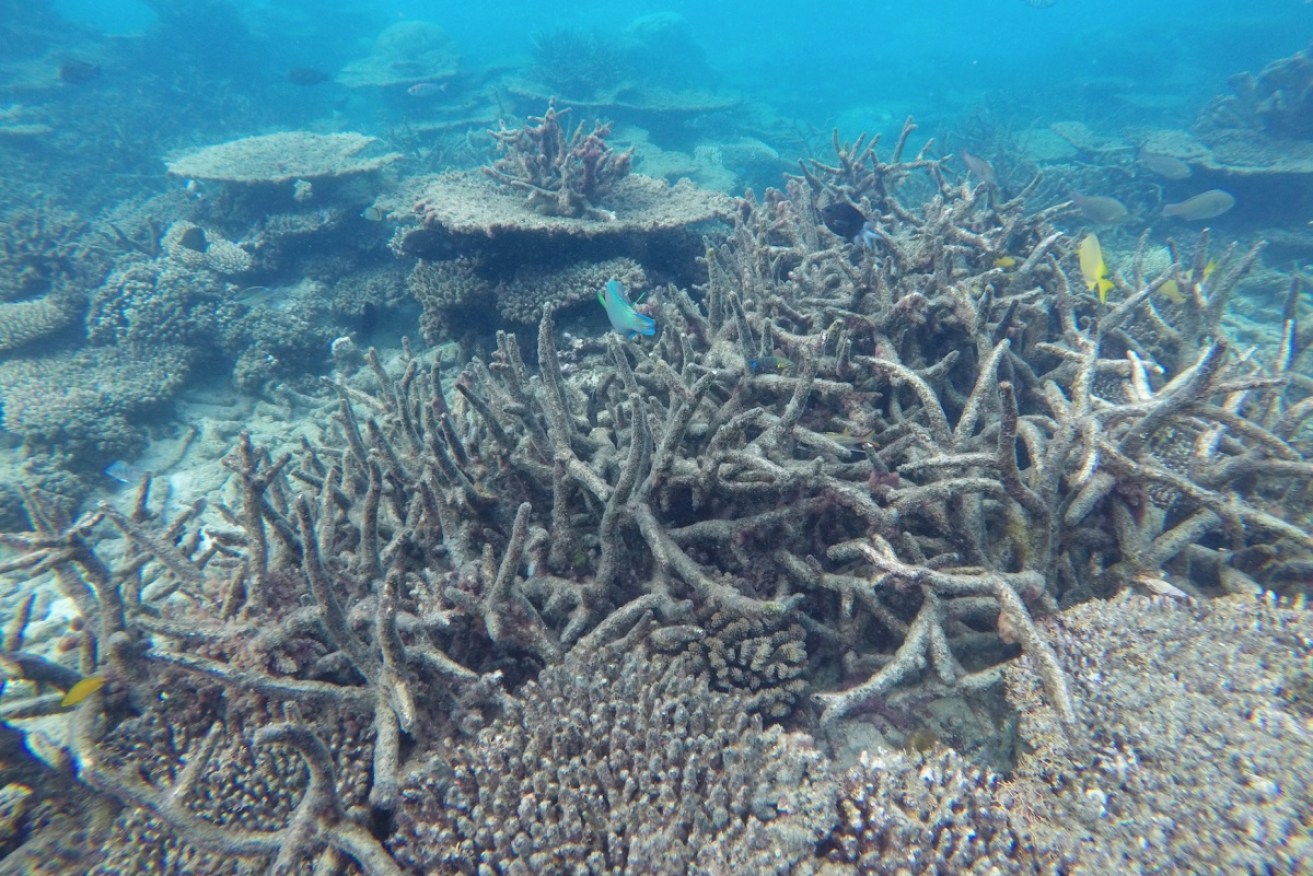Great Barrier Reef coral cooked in damaging heatwave

There are concerns there is about to be a mass bleaching event on the reef. Photo: AAP
An underwater heatwave that bleached massive sections of the Great Barrier Reef was so severe it effectively “cooked” some corals in the World Heritage-listed icon.
Branching corals that act as a nursery for juvenile marine life and give the reef its three dimensional aspect experienced a catastrophic die-off following bleaching in 2016, a new study shows.
The paper, published in the scientific journal Nature, details how that particular marine heatwave has sparked a radical shift in the composition of the reef.
It means large swaths of mature and diverse clusters have been transformed into a degraded reef structure, Queensland coral reef scientist Professor Terry Hughes says.
“We’ve been saying for a long time that these bleaching events are going to get more frequent and the consequence of that will be that the mix of species will change,” Professor Hughes said.

Researchers call for more urgent action to prevent the Great Barrier Reef’s decline as a result of climate change. Photo: AAP
“(But) there’s a big difference between making a prediction and then measuring it come to pass.”
In years to come, sprawling and intricately shaped coral species such as the Staghorn variety will be largely replaced by flat, mound-shaped formations.
“Overall we’ll probably have less coral and overall we’ll have less biodiversity,” Professor Hughes added.
The paper repeated previous science suggesting parts of the reef may never recover from the 2016 bleaching, and again called for more urgent action to prevent its decline as a result of climate change.
Professor Hughes said that as well as bleaching, “many millions of coral” in the northern third of the reef were killed much more directly by the 2016 heat.
“We were very surprised to see a quarter of the corals die in just two to three weeks during the middle of the heatwave,” he was quoted as saying by ABC.
“They didn’t die slowly of starvation, they died directly of heat stress. They cooked because the temperatures were so extreme.”
Whether or not targets such as those set out in the Paris climate agreement are met, Professor Hughes said a major transition in the reef’s appearance was already well underway.
Responding to questions about the study on Wednesday, Queensland Premier Annastacia Palaszczuk said her government would continue to fund measures to protect what she described as one the state’s greatest natural assets.
A Deloitte Access Economics report in June valued the reef at $56 billion, underpinning 64,000 direct and indirect jobs, which contributed $6.4 billion to Australia’s national economy each year.
It warned of the vast economic consequences for Australia unless more is done to protect the reef.
-with AAP








